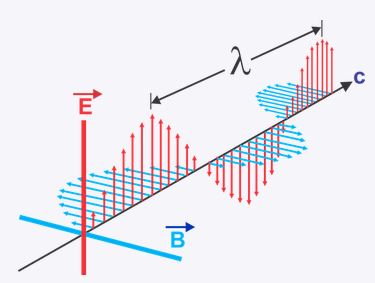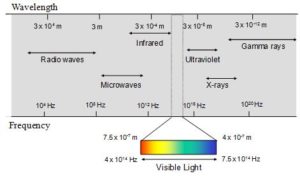Light of Different Colors In A Vacuum Travel At The Same Speed For UTME

Electromagnetic waves are waves that do not require a material medium for their propagation i.e. they travel in a vacuum. Visible or white light is an example of electromagnetic waves. These waves are categorized according to their frequency f and wavelength λ = c/f
Light of different colors in a vacuum travels at 3 x 108 ms-1 i.e. they all travel at the same speed.
White light is a mixture of many different colors, each with a different frequency. White light can be split up into a spectrum of these colors using a prism and this process is called dispersion.

The seven colors of the spectrum are listed in order of their frequency i.e. lowest to the highest frequency – ROYGBIV
- R – Red
- – Orange
- Y – Yellow
- G – Green
- B – Blue
- I – Indigo
- V – Violet
To evaluate the speed of light, the wavelength of each light is multiplied by its frequency
Wavelengths Of Visible light
- Violet: 380–450 nm
- Blue: 450–495 nm
- Green: 495–570 nm
- Yellow: 570–590 nm
- Orange: 590–620 nm
- Red: 620–750 nm
Frequency of Visible light
- Red: 4.62 x 1014 Hz
- Orange: 5.00 x 1014 Hz
- Yellow: 5.16 x 1014 Hz
- Green: 5.45 x 1014 Hz
- Cyan: 5.99 x 1014 Hz
- Blue: 6.66 x 1014 Hz
- Violet: 7.50 x 1014 Hz
Using C = f λ , different colors of light above will give approximately 3 x 108 ms-1 in a vacuum. This implies that speed is constant irrespective of the differences in wavelength and frequency.
